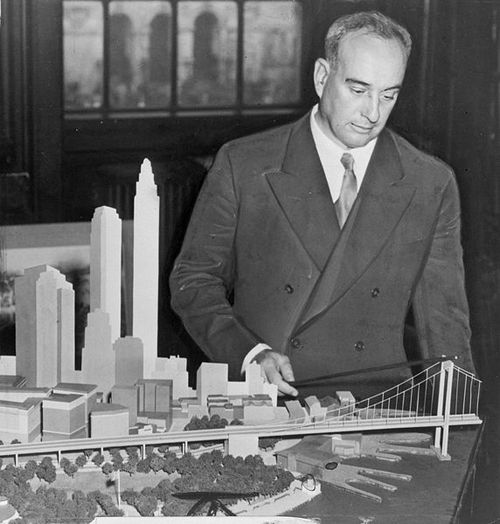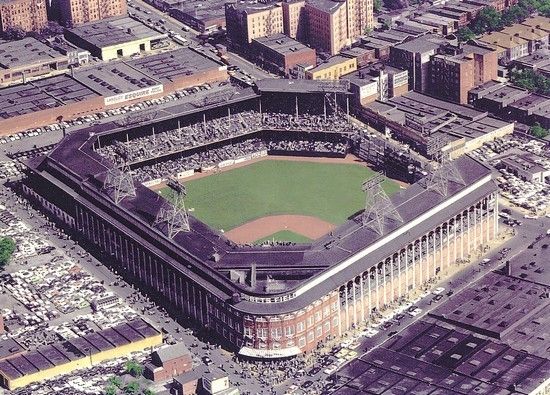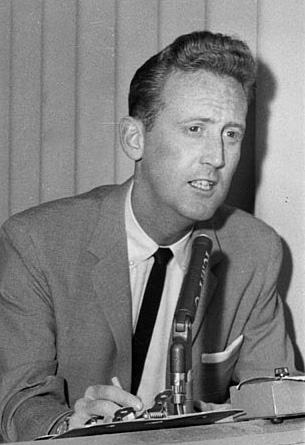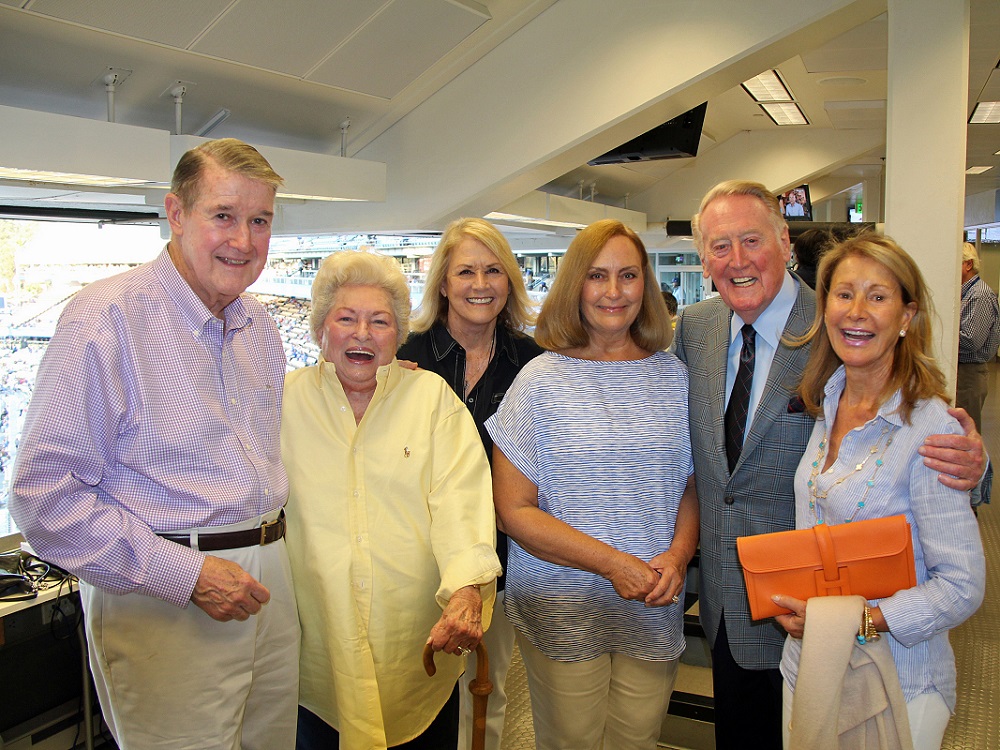During last Sunday’s game at Dodger Stadium between the Dodgers and the New York Mets, the Dodgers surpassed the three-million mark in attendance for the 18th time in the last 19 seasons and the 28th time since the franchise moved to Los Angeles from Brooklyn in 1958. And while Dodger fans still marvel at the incredible beauty of Blue Heaven on Earth as its 52nd season winds down, few Dodger fans are aware that construction of Dodger Stadium almost didn’t happen; and even fewer are aware that beloved Hall of Fame broadcaster Vin Scully actually played a key role in it happening at all.
Is this true? Did Vin Scully actually have this kind of clout even back in 1958?
The short answer is yes, but as you might imagine there is a lot more to this story.
Although many longtime Brooklyn Dodger fans still blame former Dodgers owner Walter O’Malley for moving their beloved Bums from Brooklyn to Los Angeles in 1958, the truth of the matter is that O’Malley, who was born and raised in Brooklyn, did everything that he possibly could to keep the team in the borough. Unfortunately, New York City Parks Commissioner Robert Moses, who had tremendous power and say regarding land and construction projects in New York City, absolutely refused to allow O’Malley to build a new stadium in Brooklyn to replace the extremely outdated Ebbets Field – this in spite of the fact that O’Malley agreed to finance the new stadium entirely out of his own pocket.

New York City Parks Commissioner Robert Moses did many great things for the City of New York, but he did absolutely nothing to help Walter O’Malley keep the Dodgers in Brooklyn. (AP Photo)
Believing that O’Malley was bluffing about actually moving the Dodgers out of New York, Moses refused to back down and instead offered the Dodgers owner land near Flushing Meadow to build his new stadium – land on which Shea Stadium was eventually build and where Citi Field stands today; land that is in the borough of Queens not Brooklyn. (Somehow the Queens Dodgers or even worse, the Flushing Dodgers, doesn’t have a very good ring to it).
But O’Malley was not bluffing – it was either Brooklyn or move the team to Los Angeles, where city officials had been courting the Dodgers owner since 1956 and were more than willing to work with him on acquiring land for a new stadium. Thus, it was Robert Moses who forced O’Malley’s hand and on September 24, 1957 the Dodgers played their final game at Ebbets Field.

The Brooklyn Dodgers played their final game at Ebbets Field on Tuesday, September 24, 1957 in front of 6,702 fans beating the Pittsburgh Pirates 2-0. (AP photo)
The move to Los Angeles wasn’t without its problems for O’Malley; in fact, there were huge problems. While L.A. City officials welcomed O’Malley and his Dodgers with open arms, many others did not – most notably a man named John Smith who owned the San Diego Padres, a Triple-A team in the Pacific Coast League. It was Smith’s contention that allowing the Dodgers to build their own stadium in Los Angeles would be an economic threat to his minor league franchise – a franchise that would one day itself become a major league expansion team.
To compound matters, resistance to O’Malley’s plan to build a new stadium near downtown Los Angeles was intense because the land on which the city had approved for the proposed construction of Dodger Stadium, Chavez Ravine, was home to hundreds of squatters who would be forced to leave their shanty homes. As a result, opponents of the new stadium forced the matter to be put before L.A. voters in a referendum titled Proposition B.

Proposition B as it appeared on the June 3, 1958 ballot.
(Image courtesy of griddle.baseballtoaster.com)
Although it wasn’t discovered until after the election, the driving force lobbying against Proposition B was none other than John Smith.
So how does Vin Scully play into all of this?
This excerpt from Neil J. Sullivan’s outstanding 1989 book The Dodgers Move West pretty much sums it up:
“Perhaps the most formidable asset which Walter O’Malley might have brought to bear in support of Proposition B was the Dodgers’ announcer, Vin Scully. Scully was immediately popular in Los Angeles, and with the team doing so poorly [in 1958] he became the focus for much of the enthusiasm about the team. He was the only member of the Dodgers having a good year. Scully relates that Walter O’Malley never discussed the political contest with him, nor suggested that Scully try to sway voters during his broadcasts. Such an attempt might have been received as a crude measure and triggered a backlash, but the tactic was apparently never even considered. Scully also reports that he personally felt no responsibility for the outcome of the referendum. He maintains he didn’t consider the seriousness of Proposition B until after the election was over. Up to that point, he was as unaware as Walter O’Malley about the exercise in direct democracy, and only later realized how fragile a hold the Dodgers had on Los Angeles. The announcer’s innocence served the Dodgers very well.”

Although no one knew it at the time, Vin Scully’s relationship with L.A. Dodgers fans would have a huge impact on the future of Dodger Stadium. (AP photo)
In the largest turnout for a non-presidential election (62.3%), Los Angeles voters passed Proposition B by the slimmest of margins – 351,683 in favor to 325,898 opposed, a difference of only 25,785 votes. Had the ballot measure failed, the Dodgers, in all likelihood, would have moved elsewhere – quite possibly Minneapolis, which was lobbying hard for an MLB team and eventually landing the Washington Senators and renaming them the Twins. (I can’t even imagine).

Vin Scully has remained close friends with the O’Malley family for over 65 years. L to R: Peter O’Malley, Jo Lasorda, Sharon Hough (Charlie’s wife), Yvonne Stephenson (widow of Jerry Stephenson and Brian’s mother), Vin and Annette O’Malley (Peter’s wife). (Photo credit – Ron Cervenka)
Did Vin Scully’s love affair with Dodgers fans, even brand new L.A. Dodger fans have a direct impact on the final outcome of Proposition B?
I’ll let you be the judge of that.
* * * * * * * *
References:
The Dodgers Move West – Neil J. Sullivan p-145
Walter O’Malley Official Website – June 3, 1958




 August 28th, 2014 at 6:00 am
August 28th, 2014 at 6:00 am  by Ron Cervenka
by Ron Cervenka  Posted in
Posted in 

Great article – love the history.
@Think_BlueLA Article uses word “squatters” when referring to poor working class community. Wikipedia refers to them as owner/inhabitants.
Technically correct in that many/most of them did not own their homes. It’s the very reason eminent domain exists, so that large, important public project, like freeways(or a large baseball facility drawing 3-4 million a year) that benefit millions for many decades, cannot be stopped by a few people.
@Think_BlueLA Eminent domain was used to move them out for affordable housing. Project was scrapped and lot left vacant, until Dodgers.
@Think_BlueLA More a reflection of the book source than of the writer, but use of “shanty homes” to describe the poor seem unnecessary.
It’s hard to tell if Vin had anything to do with Dodger Stadium by the above article. It’s also hard to understand why O’Malley didn’t just move to Queens, just outside of Brooklyn and continue to call the team the Brooklyn Dodgers. But with all that, I’m still a Dodger Fan.
Why not the Queens Dodgers? Well, in a way, it’s absurd, since almost the entire reason Brooklyn fans lament the team leaving is “the identity of Brooklyn”. But as to why he moved, where, and how, there are excellent, factual books on this, and if you don’t want to read a book, plenty of articles. It was an audacious undertaking that could have failed several times without O’Malley’s persistence, drive and creativity.
Excellent points all, pbealle. In fact, it was from Neil J Sullivan’s outstanding book “The Dodgers Move West” (generously given to me by truebluewill) from which most of the Brooklyn information came.
I highly recommend this book to every die-hard Dodger fan – Brooklyn and Los Angeles.
I hadn’t heard of this site in 2014!
While I understand how it must have felt for Brooklyn Dodger fans, as well as New York Giant fans, when the teams moved I’d like to offer another perspective.
In 1957 I was a kid living in Bellflower (LA suburb for those who don’t know). The city of New York had 3 MLB teams. That’s 3 more teams than the entire western half of America. While y’all mourned we celebrated, though I was mostly oblivious to baseball at the time.
While you lost your Dodgers and we gained them, we also gained something that you already had, and didn’t lose. We gained Major League Baseball.
Flushing Dodgers? Wouldn’t the Giant fans have had a field day with that!
Without Vin Scully there might not have been a Dodger Stadium, by @IBWAA member, @Think_BlueLA http://t.co/vXfOIj7TVu
RT @Think_BlueLA: New: Without Vin Scully there might not have been a Dodger Stadium – http://t.co/lYLWZNtHVu #Dodgers
RT @Think_BlueLA: New: Without Vin Scully there might not have been a Dodger Stadium – http://t.co/lYLWZNtHVu #Dodgers
RT @Think_BlueLA: New: Without Vin Scully there might not have been a Dodger Stadium – http://t.co/lYLWZNtHVu #Dodgers
RT @Think_BlueLA: New: Without Vin Scully there might not have been a Dodger Stadium – http://t.co/lYLWZNtHVu #Dodgers
‘@Think_BlueLA New: Without Vin Scully there might not have been a Dodger Stadium – http://t.co/V5uu1pFUsC #Dodgers ‘ WOW
RT @Think_BlueLA: New: Without Vin Scully there might not have been a Dodger Stadium – http://t.co/lYLWZNtHVu #Dodgers
RT @Think_BlueLA: New: Without Vin Scully there might not have been a Dodger Stadium – http://t.co/lYLWZNtHVu #Dodgers
@Think_BlueLA @VinScullyTweet
ICYMI – Without Vin Scully there might not have been a Dodger Stadium – http://t.co/fxf6h3wi6E
“@Think_BlueLA: ICYMI – Without Vin Scully there might not have been a Dodger Stadium – http://t.co/Ouly6coZCL” Thank goodness for Vin.
@Think_BlueLA Fabulous article!! ‘The Dodgers Move West’ is in my Dodgers library and should be a must-read for all Dodger fans!!
@Dodgers #whiff http://t.co/08ZgsTzcO4